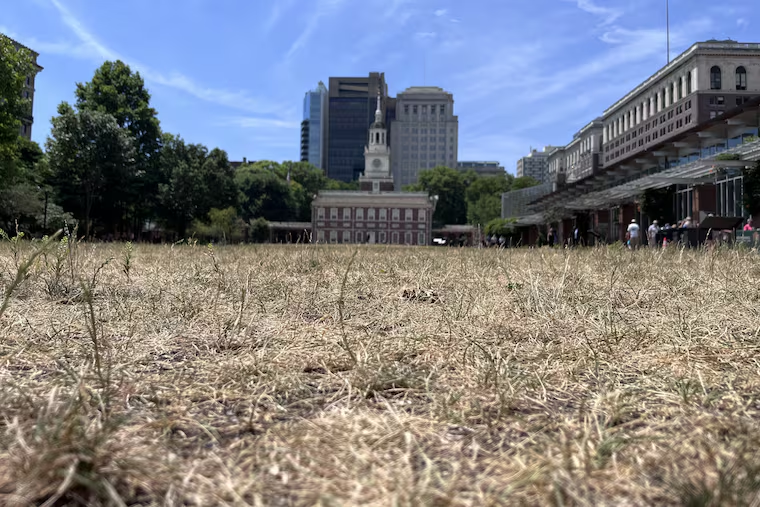Philadelphians asked to voluntarily conserve water as Pa. declares drought conditions
Residents and businesses are being encouraged to reduce water use by 10%.

Pennsylvania’s Drought Task Force has declared a drought watch for 33 counties, including Philadelphia, and is asking people to voluntarily conserve water.
Bucks, Chester, Delaware, and Montgomery Counties also fall under the declaration.
Two counties, Schuylkill and Berks, were declared to be under a drought warning because they are even drier.
Under the watch, residents and businesses are encouraged to reduce water use.
“Pennsylvania received very little rain over September and October, capping off a dry six months, particularly in the southeast part of the state. DEP makes drought declarations based on long-term trends; a rainy week may not lift the drought status for an area,” Jessica Shirley, Pennsylvania Department of Environmental Protection’s (DEP) acting secretary, said in a statement. “We want residents to be aware of these conditions and be mindful of their water use.”
» READ MORE: How you can conserve water as Pa. and N.J. drought drags on
How dry is it?
Indeed, it has been desert gulch-dry.
Philadelphia set a record for consecutive rainless days — which hit 34 Thursday — surpassing the 29-day streak that ended in November 1874. October was the first month ever recorded without measurable rain, ending with a record-tying high of 82 degrees on Halloween. Further, no rain is in the forecast during the weekend, although some areas experienced a short drizzle on Friday.
» READ MORE: October was Philly’s first rainless month in 153 years of recordkeeping
State officials also say the counties are at a higher risk of danger from wildfires.
“It is critical that Pennsylvanians use extreme caution when handling fire or avoid any burning as these conditions persist,” said Cindy Adams Dunn, secretary for the state’s Department of Conservation and Natural Resources (DCNR).
Neighboring New Jersey declared a drought watch on Oct. 18 and one week later issued a statewide fire ban. Longtime cranberry farmers say it’s the worst drought they can recall.
» READ MORE: ‘It is a crisis’: N.J. cranberry farms struggle amid worst drought they’ve ever seen
The U.S. Drought Monitor map shows Southeastern Pennsylvania and all of Southern New Jersey as in a severe drought. The map is produced by the National Drought Mitigation Center at the University of Nebraska-Lincoln, the National Oceanic and Atmospheric Administration, and the U.S. Department of Agriculture.
What are the levels of declarations?
Pennsylvania issues several levels of drought declarations. It has a drought coordinator who meets with DEP staff and the Drought Task Force to monitor four indicators before making any declarations: stream flow, groundwater level, precipitation, and soil moisture. Officials assess how big departures are from 3 to 12 month periods and also look at information from public water suppliers.
The different declarations:
Drought Watches occurs when three of the four factors are met. People and businesses are encouraged to voluntarily reduce water use by 5% to 10%.
Drought Warnings are declared when three of four indicators move into worsening conditions, and officials ask for voluntary water restrictions up to 15%.
Drought Emergencies are declared by the governor, who can put mandatory restrictions into effect.
Russell Redding, Pennsylvania’s agriculture secretary, said that farming is more weather-dependent than other business. He said the state’s average rainfall has been “upended by weather extremes and unpredictability.”
Nearly 40% of the topsoil across the state is either short or very short in moisture content in the past week, and several counties are eligible for federal relief for earlier drought conditions or flooding, he said.
“It’s critical for farmers to keep track of losses and take advantage of federal crop insurance to help recoup losses,” Redding noted.
While the state has not enacted a fire ban, officials are asking those lighting fires at home or while camping to keep combustible items at least 10 feet away, and keep a rake or shovel nearby, along with water, to fully extinguish embers.